Disclosure: This article contains affiliate links. We may earn a commission from purchases at no extra cost to you, which helps our travel content.
While most New England travelers flock to Newport's mansions or Providence's urban revival, I found myself drawn to the understated charm of Cranston, Rhode Island during a recent East Coast running event. What began as a simple recovery weekend evolved into an unexpected journey through centuries of American history, industrial innovation, and cultural preservation—all within this often-overlooked Rhode Island city just minutes from Providence.
Pawtuxet Village: New England's Historic Rebellion Ground
My exploration began in Pawtuxet Village, one of America's oldest communities, established in 1642. As someone accustomed to the expansive landscapes of the Southwest, I was immediately struck by how this compact historical district packs centuries of significance into walkable streets lined with colonial architecture.
The village sits at the mouth of the Pawtuxet River, where locals proudly informed me that the first armed resistance against British rule occurred—predating the Boston Tea Party. In June 1772, colonists boarded and burned the British ship HMS Gaspee in these waters, a pivotal moment in American revolutionary history that doesn't receive nearly the attention it deserves.
I spent a contemplative morning tracing the shoreline path, my trail running shoes exchanged for more casual footwear as I photographed the harbor where fishing vessels now peacefully dock where once revolutionary tensions boiled. The village's historic homes, many dating to the 1700s, create perfect framing elements for landscape photography—I found myself frequently adjusting my polarizing filter to capture the interplay of historical architecture against the water's reflective surface.
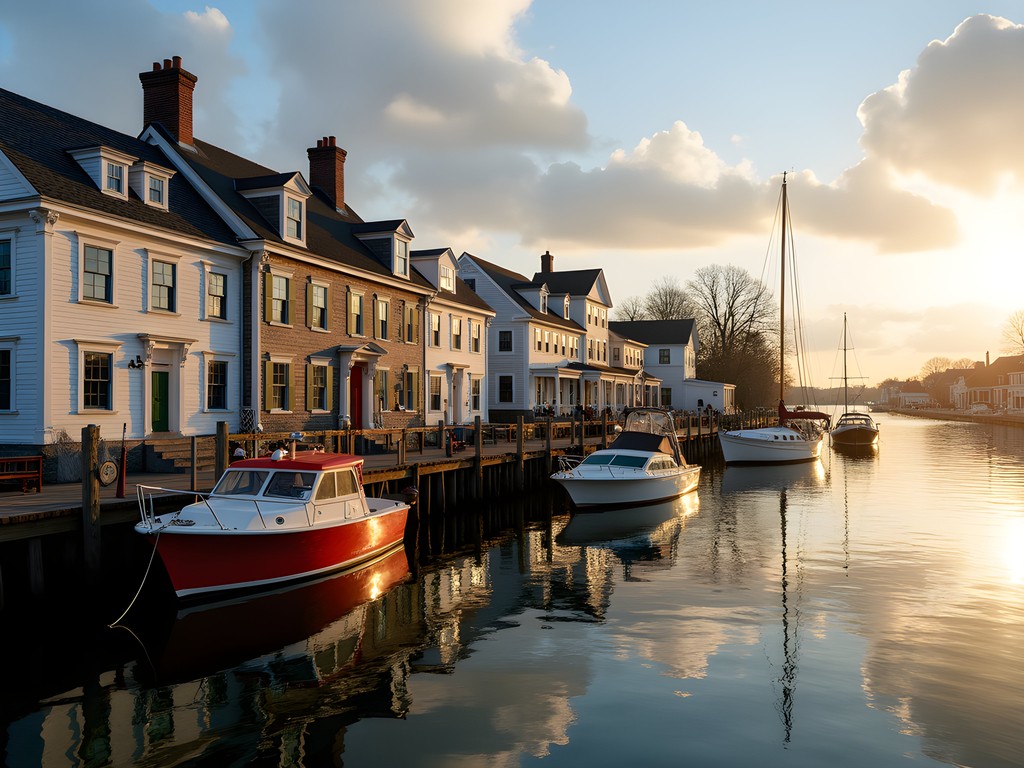
💡 Pro Tips
- Visit the Pawtuxet Rangers Armory, the chartered military organization dating back to 1774 that still marches in local parades
- Time your visit for the Gaspee Days celebration in June for historical reenactments and colonial craft demonstrations
- The village is small enough to explore thoroughly in 2-3 hours, leaving time for a meal at one of the waterfront restaurants
Sprague Mansion: Where History Meets Mystery
The analytical side of my digital forensics background was particularly engaged at my next stop: the Sprague Mansion. This imposing 1790s structure served as home to two of Rhode Island's governors and the Sprague family, who built an industrial empire of textiles and manufacturing during America's Industrial Revolution.
What makes this site uniquely compelling isn't just its architectural significance—though the period furnishings and structural details are meticulously preserved—but the layers of documented paranormal activity that have made it a destination for those interested in the unexplained. As someone who typically deals in concrete digital evidence, I approached the ghost stories with healthy skepticism, but the mansion's documented history of unexplained phenomena dating back generations is genuinely intriguing.
The guided tour ($12 per person) provides historical context about the family's rise to prominence and subsequent murder mystery involving patriarch Amasa Sprague in 1843—a case that resulted in what many historians consider a wrongful execution. The guide explained how this unresolved justice might contribute to the reported hauntings.
I captured several interesting light anomalies in my photographs, though I'll attribute those to the mansion's unique period glass windows rather than spectral manifestations. My handheld light meter proved invaluable for calculating proper exposures in the mansion's variable lighting conditions without using flash, which isn't permitted inside most historical buildings.

💡 Pro Tips
- Call ahead to confirm tour times as they operate seasonally and primarily on weekends
- Photography is allowed but without flash to protect historical artifacts
- The most detailed tours happen during their October haunted history events, which require advance booking
Cranston Print Works: America's Textile Innovation Center
As someone who typically photographs vast desert landscapes, I found an unexpected creative challenge in documenting the industrial beauty of the Cranston Print Works. Established in 1807, it stands as America's oldest continuously operating textile printing company and represents a crucial chapter in the nation's industrial development.
The facility offers limited public access through scheduled industrial heritage tours (reserve at least two weeks in advance), providing a fascinating glimpse into both historical and modern textile production techniques. What struck me most was how the company has evolved from traditional block printing to advanced digital processes while maintaining operations in its historic buildings.
The tour highlights the company's innovations in textile chemistry and printing technology that revolutionized American manufacturing. As someone who works with digital technology daily, I appreciated the parallels between early industrial innovation and today's digital transformation—both representing paradigm shifts in how humans create and produce.
For visitors interested in textile arts or industrial history, this stop provides context that's missing from most New England historical itineraries that focus primarily on colonial or maritime history. I found myself wishing I'd brought my field notebook to capture technical details about the printing processes explained during the tour.

💡 Pro Tips
- Tours must be scheduled in advance through their website and typically run on Thursdays
- Wear closed-toe shoes as some areas of the facility have industrial equipment
- Photography permissions vary by department, so ask your guide about specific areas
Joy Homestead: Intimate Glimpses of Colonial Life
For those seeking a more intimate historical experience, the Joy Homestead offers a refreshingly personal perspective on colonial New England life. Built in 1758, this modest farmhouse presents a stark contrast to the industrial wealth displayed at the Sprague Mansion, instead focusing on the daily experiences of ordinary colonial families.
What makes this site special is its meticulous restoration and the knowledgeable volunteer docents who bring the space to life. Unlike larger historical attractions, here you can actually handle reproduction items, sit in period chairs, and gain a tactile understanding of colonial domestic life. The docent encouraged me to test the weight of cast iron cookware and experience the surprisingly comfortable design of colonial furniture adapted for different body types and uses.
The property includes heirloom gardens featuring plant varieties that would have been grown for food and medicine in the 18th century. As an amateur photographer interested in natural landscapes, I spent considerable time documenting these heritage plants with my macro lens filters, capturing details of medicinal herbs that colonial families would have relied upon for healthcare.
The homestead also highlights the Joy family's Quaker heritage and their early anti-slavery stance, providing important context about the diversity of political and religious perspectives in colonial New England. This nuanced historical interpretation offers a welcome complexity often missing from more commercial historical attractions.

💡 Pro Tips
- Call ahead as the homestead operates with limited hours staffed by volunteers
- The most engaging visits coincide with their living history demonstrations, typically held monthly
- The gardens are most impressive from late May through September
Culinary Heritage: Cranston's Italian-American Traditions
No cultural exploration would be complete without engaging with local food traditions, and Cranston's deep Italian-American heritage provides ample opportunity. While Providence's Federal Hill typically gets the attention for Italian cuisine, Cranston's Knightsville neighborhood offers equally authentic experiences without the tourist crowds.
I discovered this area entirely by chance, following a recommendation from a local runner I met while stretching at the Cranston bike path. The neighborhood centers around St. Mary's Church, which has anchored the Italian-American community since the early 20th century when immigrants arrived to work in local textile mills.
My methodical approach to exploration led me to several family-owned establishments where traditional recipes have been preserved across generations. At Dolores Bakery, I found Italian cookies made with recipes unchanged since 1938, while Antonio's Trattoria served a remarkable pasta fagioli that transported me back to similar dishes I'd enjoyed while trail running in northern Italy.
The highlight was discovering the St. Mary's Feast in July, a traditional Italian religious celebration featuring processions, music, and incredible street food. The feast has continued for over a century and represents the kind of authentic cultural experience that's increasingly rare in commercialized tourist destinations.
I documented the culinary journey with my smartphone rather than my usual camera setup, finding that the phone camera lens kit provided the perfect focal length for food photography in the often dimly-lit, intimate restaurant settings.
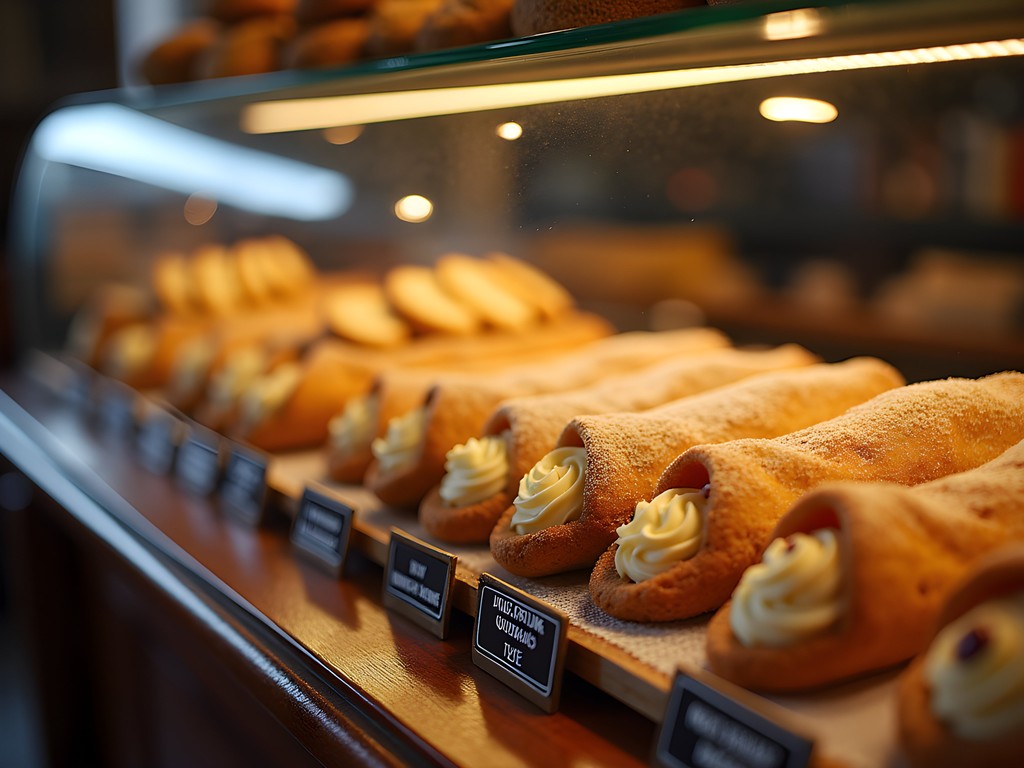
💡 Pro Tips
- Visit Knightsville on Sunday mornings when families gather after church services for traditional meals
- If possible, plan your Cranston visit during the St. Mary's Feast in July for the most immersive Italian-American cultural experience
- Most family restaurants in the area don't take reservations and operate on a first-come basis
Final Thoughts
What began as a recovery weekend between running events evolved into one of the most rewarding cultural explorations I've experienced in New England. Cranston offers precisely what many travelers seek but rarely find—authentic historical experiences without commercial veneer, meaningful interactions with locals passionate about their heritage, and the satisfying discovery of places not yet overrun by tourism.
For couples seeking connection both with each other and with America's layered history, Cranston provides an ideal weekend escape. The proximity to Providence means you can easily combine urban amenities with these more intimate cultural experiences. As someone who typically gravitates toward natural landscapes, I found unexpected satisfaction in this exploration of human heritage and innovation.
I've learned that sometimes the most revealing cultural journeys happen in places overlooked by mainstream travel narratives—a reminder to approach every destination with curiosity and an analytical eye for the stories hiding just beneath the surface. Cranston may not make the cover of travel magazines, but perhaps that's precisely what preserves its authenticity and charm.
✨ Key Takeaways
- Cranston offers accessible historical experiences without the crowds of more famous New England destinations
- The city's diverse heritage sites span colonial history, industrial innovation, and immigrant cultural traditions
- Budget-friendly exploration is possible through many volunteer-run historical societies with minimal admission fees
- Combining Cranston's cultural sites with Providence's amenities creates an ideal weekend itinerary
📋 Practical Information
Best Time to Visit
year-round, though May-October offers optimal weather and most sites are fully operational
Budget Estimate
$200-350 for a weekend (excluding accommodations)
Recommended Duration
2-3 days
Difficulty Level
Easy

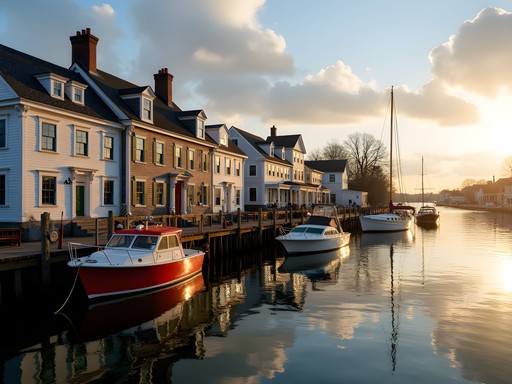
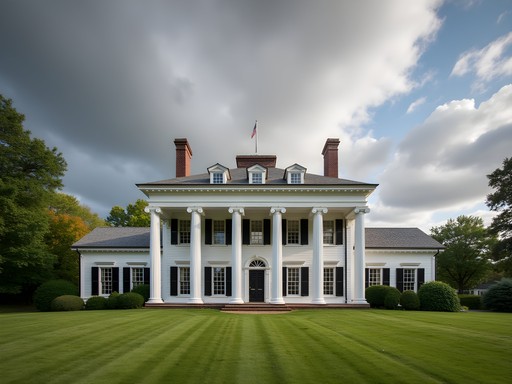
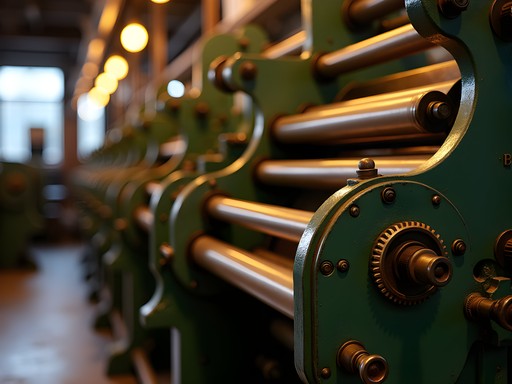
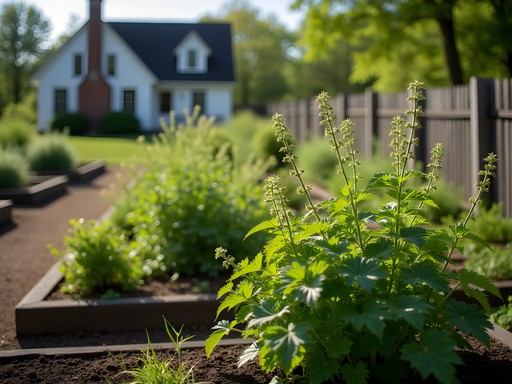
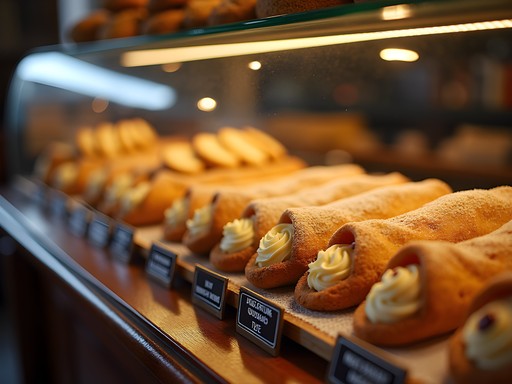



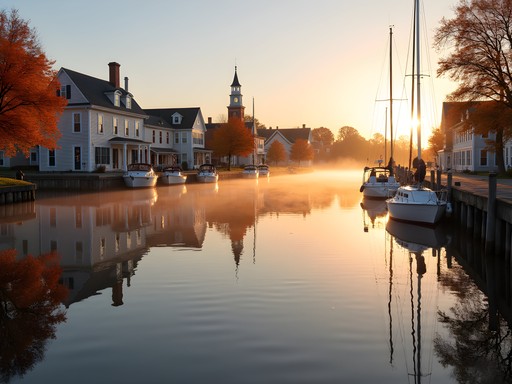






Comments
skywanderer
Planning a New England road trip for October and thinking about adding this to our itinerary. How long would you recommend staying in Cranston to see these sites? And any recommendations for where to stay?
Adam Spencer
I'd say one full day is enough for Cranston's highlights if you're on a tight schedule. I actually stayed at a B&B in Pawtuxet Village called historic inn which put me in walking distance to several sites. October will be gorgeous with fall foliage!
skywanderer
Perfect, thanks! One day sounds doable. Will look into that B&B option.
cityqueen
OMG YES!!! Finally someone giving Cranston the love it deserves! My grandparents lived there and I grew up visiting the Joy Homestead every summer. Those colonial cooking demonstrations are still some of my favorite childhood memories. Such a special place that most tourists completely miss!
Savannah Torres
Adam, this couldn't have come at a better time! I just took my kids (8 and 10) to Cranston last month while visiting family in Providence, and Sprague Mansion was unexpectedly their favorite stop of the trip. The ghost stories had them completely captivated, and the volunteer guide was amazing with children. We also spent an afternoon at Pawtuxet Village and found this adorable ice cream shop right by the water where you can watch boats while enjoying your cone. Perfect for families who want to mix history with kid-friendly activities. The Print Works museum was closed when we visited (Monday), so heads up to other travelers to check opening hours!
skywanderer
Did you need a car to get around Cranston? Thinking about a weekend trip but not sure about logistics.
Savannah Torres
We had a rental car, which made it easier with kids, but there are RIPTA buses that connect Providence to Cranston. Just requires a bit more planning!
nomadclimber
Never would've thought to check out Cranston! Always just drive through on the way to Providence. Definitely adding Pawtuxet Village to my list now.
Adam Spencer
That's exactly why I wrote this! So many people miss these gems. Hope you enjoy it when you visit!
Ana Robinson
If anyone's planning a family trip to Cranston, there's a wonderful ice cream shop near Pawtuxet Village that my kids absolutely loved after our history walk! Also, the staff at Joy Homestead were amazing with children - they had special colonial-era games and activities that made history come alive for them. We stayed at a small B&B nearby that gave us a real sense of New England charm. Pro tip: Cranston makes a perfect addition to a Providence weekend, especially if you're looking to escape the college crowds!
travelqueen
Thanks for the ice cream tip! Any chance you remember the name of the place?
Ana Robinson
I believe it was called Sundaes! Small place with homemade waffle cones that smell amazing from down the street!
Hayden Butler
Adam, your post brought back wonderful memories! I stayed at the historic Governor Sprague Inn nearby last summer while exploring Rhode Island's lesser-known historical sites. The innkeeper shared fascinating stories about the Sprague family that aren't in the official tours. If anyone's planning a visit, I'd recommend bringing a good camera with a wide-angle lens for the Cranston Print Works - the machinery is massive and hard to capture with just a phone camera. I used my travel tripod for some amazing long-exposure shots of the waterwheel mechanism. Also worth noting - the small café at Pawtuxet Village (Captain's Table) makes an incredible clam chowder that rivals anything in Newport!
happybuddy
Thanks for the food tip! Definitely trying that chowder when I visit.
explorelover
Those Pawtuxet Village photos are stunning! Adding to my list!
luckyguide
Great post! Is the Cranston Print Works still operational or is it just a museum now? Planning a trip through New England this fall and love adding these lesser-known spots to break up the drive.
Jean Wells
Adam, this is precisely the kind of off-the-beaten-path content I appreciate. Having visited Rhode Island numerous times over the decades, I'm somewhat embarrassed to admit I've overlooked Cranston entirely. The historical significance of Pawtuxet Village in particular—being the site of the first armed rebellion against British rule—deserves far more recognition in the American historical narrative. I've added the Joy Homestead to my itinerary for my New England autumn tour. I find these intimate colonial homes offer more authentic insights than the grander mansions. I'd recommend visitors use the Rhode Island Explorer's Guide for additional context on these historical sites.
luckyguide
Jean, do you think Cranston is worth a full day trip from Boston? Or better as a stop on the way somewhere else?
Jean Wells
I'd recommend it as a thoughtful half-day excursion. Combine it with Providence for a full day of Rhode Island exploration that balances urban and historical experiences.
wanderexplorer
Never heard of Cranston before but now I'm intrigued!
Venture X
Premium card with 2X miles, $300 travel credit, Priority Pass